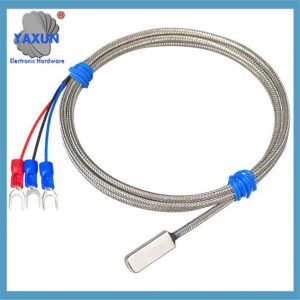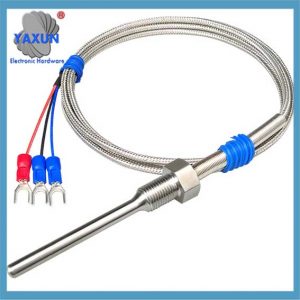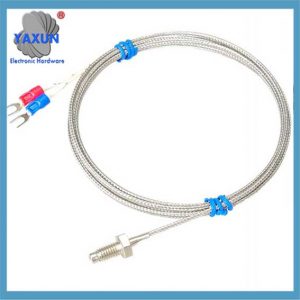A pellet stove is a device used to heat or calcine solid pellets, usually used in industrial production and laboratories. During the operation of a pellet stove, a temperature sensor is a very important component used to measure the temperature inside the furnace to ensure temperature control and stability inside the furnace.
For a pellet stove, choosing a suitable temperature sensor is very critical. According to the materials and operating requirements of the pellet stove, common types of temperature sensors include thermocouples and thermistors. Below we will introduce the application of these two sensor types in pellet stoves respectively.
Thermoelemente sind ein häufig verwendeter Temperatursensor, der auf dem thermoelektrischen Effekt zwischen zwei verschiedenen Metallen basiert. Thermoelemente haben einen großen Messbereich und eine gute Stabilität, und eignen sich zur Temperaturmessung in Hochtemperaturumgebungen. Pelletöfen müssen in der Regel höhere Temperaturen messen, Daher sind Thermoelemente eine häufige Wahl. Zu den gängigen Thermoelementtypen gehört der K-Typ, N-Typ, und S-Typ, die eine genaue Temperaturmessung in verschiedenen Temperaturbereichen ermöglichen kann.
In addition to thermocouples, thermistors are also common temperature sensors, which measure temperature based on the characteristics of the material’s resistance changing with temperature. In pellet stoves, commonly used thermistor materials include platinum resistors and nickel resistors. Platinum resistors have high measurement accuracy and stability, and are suitable for a wide temperature range. Nickel resistors are suitable for lower temperature ranges, but their prices are relatively low, making them suitable for some occasions with higher economic requirements.
Pellet stove oven temperature sensor
For pellet stoves, the specific selection of temperature sensors also requires other factors to be considered, such as sensor size, Ansprechzeit, Anti-Interferenz-Fähigkeit, usw. Zusätzlich, it is also necessary to consider the specific process requirements of the pellet stove and the requirements of the monitoring system. Allgemein gesprochen, 100k sensors are more sensitive and can detect a wider temperature range, while 50k sensors are more stable and reliable. The specific choice of sensor depends on the specific needs and design requirements of the pellet stove.
Zusamenfassend, pellet stoves usually need to measure higher temperatures, and common types of temperature sensors include thermocouples and thermistors. The specific selection of temperature sensors requires comprehensive consideration of multiple factors, including measurement range, Genauigkeitsanforderungen, process requirements, usw. It is recommended to select temperature sensors under the guidance of suppliers or professionals.
 English
English العربية
العربية Български
Български 粤语
粤语 中文(简体)
中文(简体) 中文(漢字)
中文(漢字) Nederlands
Nederlands Suomi
Suomi Français
Français Deutsch
Deutsch Ελληνικά
Ελληνικά Magyar
Magyar Italiano
Italiano 日本語
日本語 한국어
한국어 Polski
Polski Português
Português Română
Română Русский
Русский Slovenščina
Slovenščina Español
Español Svenska
Svenska ภาษาไทย
ภาษาไทย Türkçe
Türkçe Tiếng Việt
Tiếng Việt



